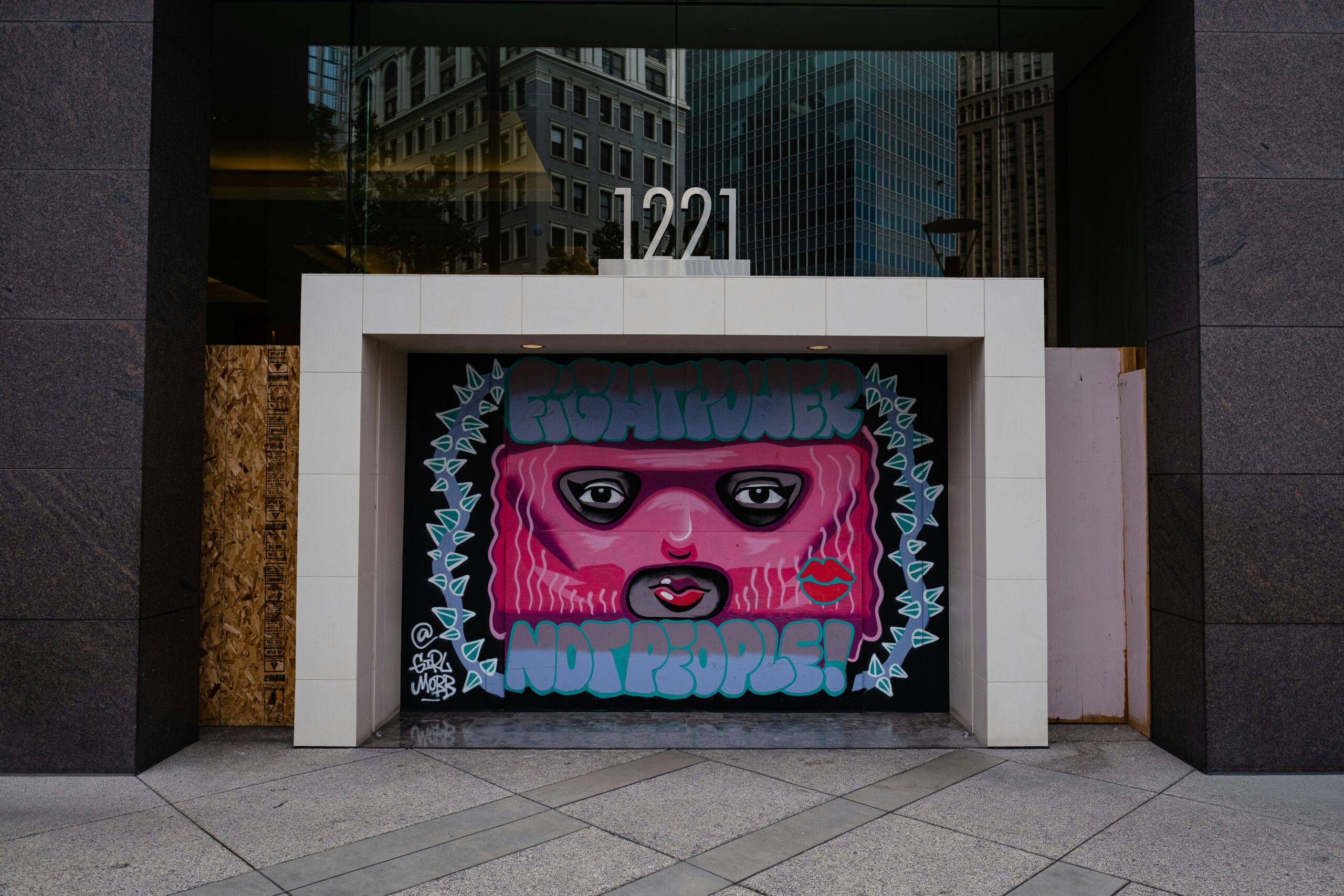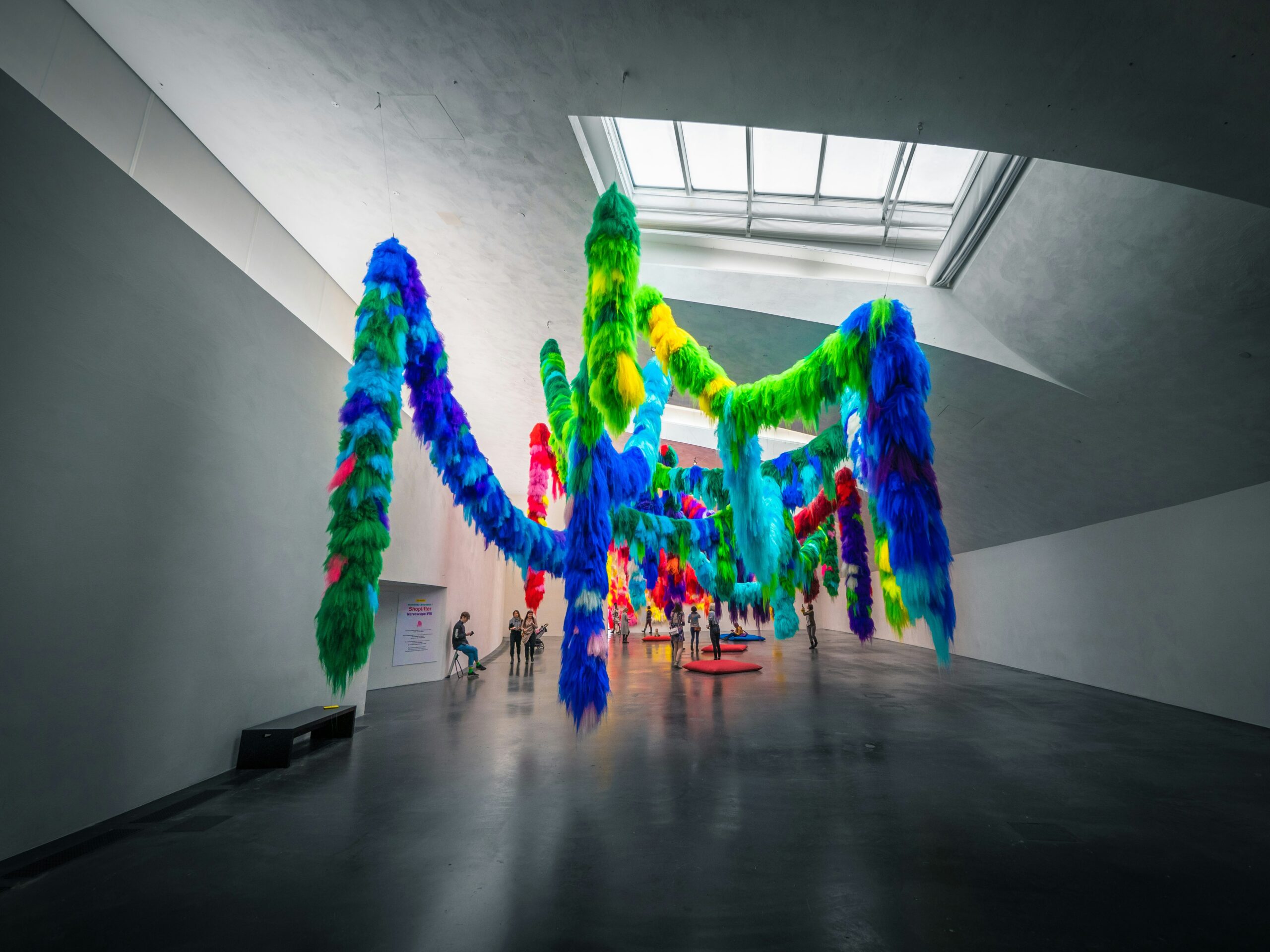How to Display Artwork Without Walls: Creative Ways to Showcase Art Without Hanging or Drilling
I love finding creative ways to show off my favorite art pieces, especially when hanging them on walls isn’t an option. Whether I’m living in a rental, dealing with limited space, or just craving a fresh look, I’ve discovered there are plenty of stylish solutions that don’t require a single nail or hook.
Displaying artwork without walls lets me play with unexpected spots and unique setups, turning any room into a personal gallery. It’s all about thinking outside the frame and making art a part of everyday life, no matter the space.
Creative Display Ideas for Artwork Without Walls

Freestanding Easels
Freestanding easels display single artworks in compact spaces. I use wooden or metal easels for paintings and photography prints, easily repositioning them to change the focal point of a room.
Leaned Art on Furniture
Leaning framed art on shelves, mantels, or cabinets creates casual arrangements. I layer pieces by size, placing smaller prints in front of larger canvases for a gallery-inspired effect.
Picture Ledges
Picture ledges hold multiple artworks, letting me rotate pieces seasonally. I group art by theme or color to achieve cohesive vignettes.
Room Dividers
Room dividers with built-in shelves or slot panels function as mobile display surfaces. I place prints and sculptures asymmetrically for visual variety.
Floor-Based Arrangements
Floor-based arrangements showcase oversize pieces. I balance large canvases against baseboards and add potted plants for texture.
Art Displays in Game and Casino Themes
Displaying casino-themed artwork on card tables or poker chip trays introduces playful character. I place framed prints of famous casino scenes on DIY standing screens, using felt-topped table displays during game nights for added atmosphere.
Artwork Display Comparison Table
| Display Method | Suitable Art Types | Space Usage | Mobility | Example Contexts |
|---|---|---|---|---|
| Freestanding Easels | Paintings, Photographs | Low | High | Living rooms, studios |
| Leaned Art on Furniture | Framed prints, Canvases | Moderate | High | Bookshelves, mantels |
| Picture Ledges | Small-to-medium framed pieces | Low | Medium | Hallways, bedrooms |
| Room Dividers | Mixed media, Photos, Sculptures | Medium | High | Studios, open-plan layouts |
| Floor-Based Arrangements | Large canvases, Oversize prints | High | Medium | Entryways, lofts |
| Casino-Themed Displays | Playing card art, Casino prints | Low | High | Game nights, lounges |
Art Display Props Table
| Prop Type | Common Materials | Advantages |
|---|---|---|
| Easels | Wood, Metal | Adjustable, versatile |
| Ledges | MDF, Wood, Metal | Easy swap-outs |
| Room Dividers | Wood, Fabric panels, Metal | Doubles as decor |
| Furniture (Shelves) | Wood, Glass, Laminate | Multi-use surface |
| Poker/Tabletop Displays | Felt, Acrylic, Wood | Thematic, interactive |
Using Furniture as Art Displays

I use furniture to showcase art without attaching anything to walls, maximizing flexibility and adding personality to my rooms. These arrangements let me update my displays quickly and adapt them to different styles or occasions.
Easels and Art Stands
I place easels or art stands in corners or next to sofas for a gallery-like feel. Easels support canvases, framed prints, or posters, fitting both large and small artworks. Adjustable stands handle varying sizes or orientations, giving me more control over the presentation. I also use tabletop easels for displaying smaller pieces on side tables, desks, or dressers.
| Display Type | Suitable Art Sizes (in) | Placement Examples | Mobility |
|---|---|---|---|
| Floor Easel | 18×24–36×48 | Living room corner, entry | High |
| Tabletop Easel | 5×7–16×20 | Nightstand, shelf | High |
| Folding Art Stand | 8×10–20×30 | Bookshelf top, side table | High |
Bookshelves and Ledges
I lean framed art against the back of bookshelves or picture ledges to combine books, storage, and display. Bookshelves let me layer artwork with decorative objects, such as ceramics or candles. Ledges allow for quick art swaps, ideal for rotating seasonal or themed pieces. I sometimes layer pieces of varying sizes to produce depth and blend designs.
| Furniture | Art Type | Display Style | Additional Storage |
|---|---|---|---|
| Bookshelf | Framed prints | Layered, vertical | Yes |
| Floating Ledge | Canvas, photos | Overlapping, staggered | No |
| Cabinet Top | Sculptures, art | Casual leaning, grouping | Yes |
Incorporating Art Into Everyday Objects
Bringing art into day-to-day items lets me highlight favorite pieces without hanging them. I find this approach effective for making art integral to spaces that don’t support wall displays.
Tabletops and Desktops
Placing art on tabletops and desks lets me feature small prints, sculptures, or ceramics within arm’s reach. I position framed miniatures, art books, and paperweights with artistic motifs among my work materials. I favor acrylic stands, display easels, or decorative trays to keep artwork upright and visible. Swapping objects seasonally or by theme transforms the mood of the desk or coffee table instantly.
Table: Popular Tabletops and Desktops Display Options
| Item Type | Example Artworks | Placement Ideas | Flexibility |
|---|---|---|---|
| Miniature frames | Postcards, small photos | Desks, shelves | High |
| Sculptures | Ceramic, metal figurines | Tables, window sills | Moderate |
| Art books | Illustrated editions | Stacks as risers | High |
| Artistic trays | Painted, resin trays | Entry or coffee tables | High |
Room Dividers and Screens
Setting up art on room dividers or folding screens divides open spaces while also showing off visual favorites. Freestanding screens display lightweight canvas panels, draped textiles, or clip-on prints. This method creates bonus display surfaces, especially in homes with few available walls. I adjust the arrangement or switch pieces during gatherings or themed events to keep the setup dynamic.
| Display Surface | Maximum Art Size | Number of Pieces | Portability | Thematic Rotation |
|---|---|---|---|---|
| Folding screens | 36″ x 24″ | 4–8 | High | Easy |
| Modular dividers | 24″ x 36″ | 3–6 | Moderate | Moderate |
| Rolling partitions | 48″ x 36″ | 6–10 | High | Easy |
Hanging Art Without Traditional Walls
Alternative display techniques give me new ways to feature artwork when walls aren’t usable. Ceiling suspensions and door or window frame displays let me add vertical visual interest and stay flexible with art placement.
Ceiling Suspensions
Ceiling-mounted systems support artwork in open areas. I use cables, hooks, or rails to suspend art at eye level. Lightweight paintings, prints, or fabric art suit this method best. Ceiling suspensions work well above furniture groups or in corners, maximizing otherwise empty space.
| Suspension System | Best For | Space Use | Rotation Ease |
|---|---|---|---|
| Steel cable & hooks | Framed prints, canvases | Open floor or corners | Quick |
| Magnetic rails | Posters, fabric panels | Near seating or tables | Fast |
| Adjustable rods | Mixed media clusters | Room divider effect | Moderate |
Window and Door Frame Displays
Window and door frames anchor art safely without damaging walls. I hang art with removable hooks or tension rods. Small to medium prints, lightweight frames, and suncatchers stand out, especially with backlighting from natural light. Rotation is easy, letting me update rooms seasonally.
| Frame Type | Suitable Art | Size Range | Seasonal Adaptability |
|---|---|---|---|
| Upper window sash | Sun-illuminated glass art, mobiles | Up to 18″x24″ | High |
| Door header | Slim framed prints, canvas panels | Up to 24″x30″ | High |
| Sidelight window | Small prints, decorative flags | Up to 12″x18″ | Fast swaps |
DIY and Flexible Display Solutions

I find that DIY and flexible display solutions unlock possibilities for presenting artwork creatively, especially when permanent fixtures or wall-mounting aren’t an option. Both freestanding panels and modular grids adapt to changing spaces, styles, and collections, keeping displays dynamic and accessible.
Freestanding Panels
Freestanding panels allow me to create movable art galleries without touching the walls. I use folding screens, pegboard panels, or lightweight boards, choosing neutral or themed finishes to match decor. These panels stand anywhere—entryways, behind sofas, or in unused corners. Art attaches with clips, Velcro, or removable hooks, making swaps effortless. Large panels support oversized canvases or grouped displays, while smaller ones fit compact rooms.
Comparison Table: Freestanding Panel Types
| Panel Type | Material | Maximum Art Size | Mobility | Display Style |
|---|---|---|---|---|
| Folding Screen | Wood/Fabric | 36″ × 48″ | High | Multi-panel |
| Pegboard Panel | MDF/Metal | 24″ × 36″ | Moderate | Custom layout |
| Foam Board Stand | Foam/Plastic | 20″ × 30″ | High | Single piece |
Modular Display Grids
Modular display grids let me build scalable, reconfigurable systems for shifting art needs. I install grid cubes, wire mesh panels, or interlocking shelves—each supports framed works, prints, or small sculptures. I connect additional grids to expand as my collection grows. Magnetic clips, S-hooks, or cable ties make changing displays simple. Modular grids double as functional partitions between living zones.
Comparison Table: Modular Display Grid Features
| Grid System | Assembly Method | Capacity | Recommended Art Types | Adaptability |
|---|---|---|---|---|
| Wire Mesh Panel | Clip-together | Medium | Framed art, prints | High |
| Grid Cube Organizer | Snap-fit | High | Sculpture, books, prints | Moderate |
| Interlocking Wall Grid | Bracket-mount | Low | Small frames, cards | High |
Modular, freestanding solutions combine flexibility, mobility, and ease of seasonal change, supporting art displays in rentals, studios, and open-plan rooms.
Tips for Showcasing Art in Open Spaces
Freestanding easels anchor artwork in open layouts and deliver a gallery feel with flexible placement. I position floor easels in unused corners, tucked behind chairs, or along wide hallways to highlight large canvases or showy framed prints. Multipurpose art stands let me cluster smaller pieces together or elevate feature works next to sofas and room dividers.
Furniture surfaces shift artwork into daily view. I lean framed art on console tables, arrange art books with small sculptures on credenzas, and stagger ceramic pieces on coffee tables for layered displays. Acrylic risers or decorative trays make tabletop print arrangements eye-catching and easy to rotate with the seasons.
Room dividers work as dynamic galleries, separating spaces while displaying new favorites. Folding screens clad with fabric or pegboard let me pin lightweight works or hang art on hooks. I can roll partitions between rooms for instant layout changes and use them to present themed installations during gatherings.
Modular display grids maximize adaptability in open areas. I use reconfigurable metal or wood grids to exhibit framed art, photos, or objects, scaling the system up or down as my collection grows. Grid panels allow for grouped arrangements or solo features and shift to new locations with little effort.
Suspended art displays maintain visual flow in open spaces. Overhead cables or tension rods help me hang lightweight prints or mobiles at eye level, preserving wall surfaces while filling vacant air space. Ceiling hooks or magnetic rails let me reposition works easily or adjust heights for varied impact.
Window ledges and door frames extend display space without wall fixtures. I lean narrow framed art against glass or secure prints with tension rods in wide doorways, taking advantage of natural light and architectural features for changing arrangements.
Display Method Comparison Table
| Display Method | Suitable Art Types | Mobility Level | Max Art Size | Seasonal Rotation Ease |
|---|---|---|---|---|
| Freestanding Easels | Large canvases, prints | High | 48″x72″ | Moderate |
| Furniture Surfaces | Small-medium framed works | Very High | 24″x36″ | Very Easy |
| Room Dividers | Lightweight works, fabric | High | 36″x48″ (per side) | Easy |
| Modular Grids | Mixed media, collections | Very High | Customizable | Easy |
| Suspended Displays | Prints, mobiles | Moderate | 24″x36″ | Easy |
| Window/Door Displays | Small-framed prints | High | 12″x24″ | Very Easy |
Art and Furniture Pairing Table
| Furniture Piece | Suggested Art Type | Max Weight Supported | Placement Idea |
|---|---|---|---|
| Console Table | Framed prints, ceramics | 20 lbs | Behind sofa, hallway entrance |
| Bookshelf Top | Art books, sculptures | 15 lbs | Living room, study |
| Coffee Table | Small art, trays | 10 lbs | Center of seating area |
| Sideboard | Layered art, vases | 25 lbs | Dining room, open entry |
Conclusion
I’ve found that displaying art without using walls opens up a world of creative possibilities. With the right mix of freestanding elements and flexible solutions it’s easy to keep favorite pieces visible and fresh no matter the space or situation.
These approaches let me showcase my style and personality while staying adaptable to changing tastes and needs. Whether I’m in a rental or just want to avoid making holes in the walls there’s always a way to turn any room into a personal gallery.
Frequently Asked Questions
What are some alternatives to hanging art on walls?
You can display art using freestanding easels, leaning pieces on furniture, using picture ledges, or placing art on tabletops and desks. Room dividers, folding screens, and modular display grids also offer great, wall-free options.
How can I showcase art in a rental without damaging the walls?
Try leaning framed art against bookshelves or using props like easels and decorative trays. Removable hooks, tension rods, or display stands allow you to showcase your favorite pieces without leaving marks.
Is it possible to display art in small or open-plan spaces?
Yes, use freestanding easels, modular display grids, or furniture surfaces. Room dividers and folding panels can divide space while showcasing art. Tabletop displays and corner art stands work well for tight areas.
Can seasonal art swaps be done easily with these methods?
Absolutely. Freestanding and modular systems, ledges, tabletops, and portable panels make it simple to switch art for different seasons or occasions, adding fresh vibes without extra effort.
What display options work best for oversized art pieces?
Oversized pieces can be placed directly on the floor, leaned against walls, or displayed on large easels. Room dividers or folding panels can also support larger artwork without needing wall mounts.
Are there ways to display multiple art pieces together without drilling holes?
Yes, use picture ledges, modular grids, or tiered tabletop stands for grouped arrangements. Pegboard panels and freestanding screens also make it easy to organize collections without any wall installation.
How do I display art near windows or door frames?
Place art on window ledges or use tension rods and removable hooks for temporary displays in doorframes or window areas. This avoids wall damage while still showcasing your favorite art.
Are these art display methods flexible and easy to move?
Most of the recommended solutions—like easels, screens, tabletop stands, and modular grids—are lightweight and portable, making them easy to reposition or move when you redecorate or relocate.
What kinds of art can I use with freestanding and tabletop displays?
Freestanding easels, display stands, and furniture surfaces work with framed prints, canvases, photographs, small sculptures, ceramics, and even themed collections for events or seasons.
How can I create a unique display that matches my personal style?
Mix and match various display methods, use art that reflects your personality, and incorporate decorative objects alongside your artwork on furniture, ledges, or screens for a personalized look.
